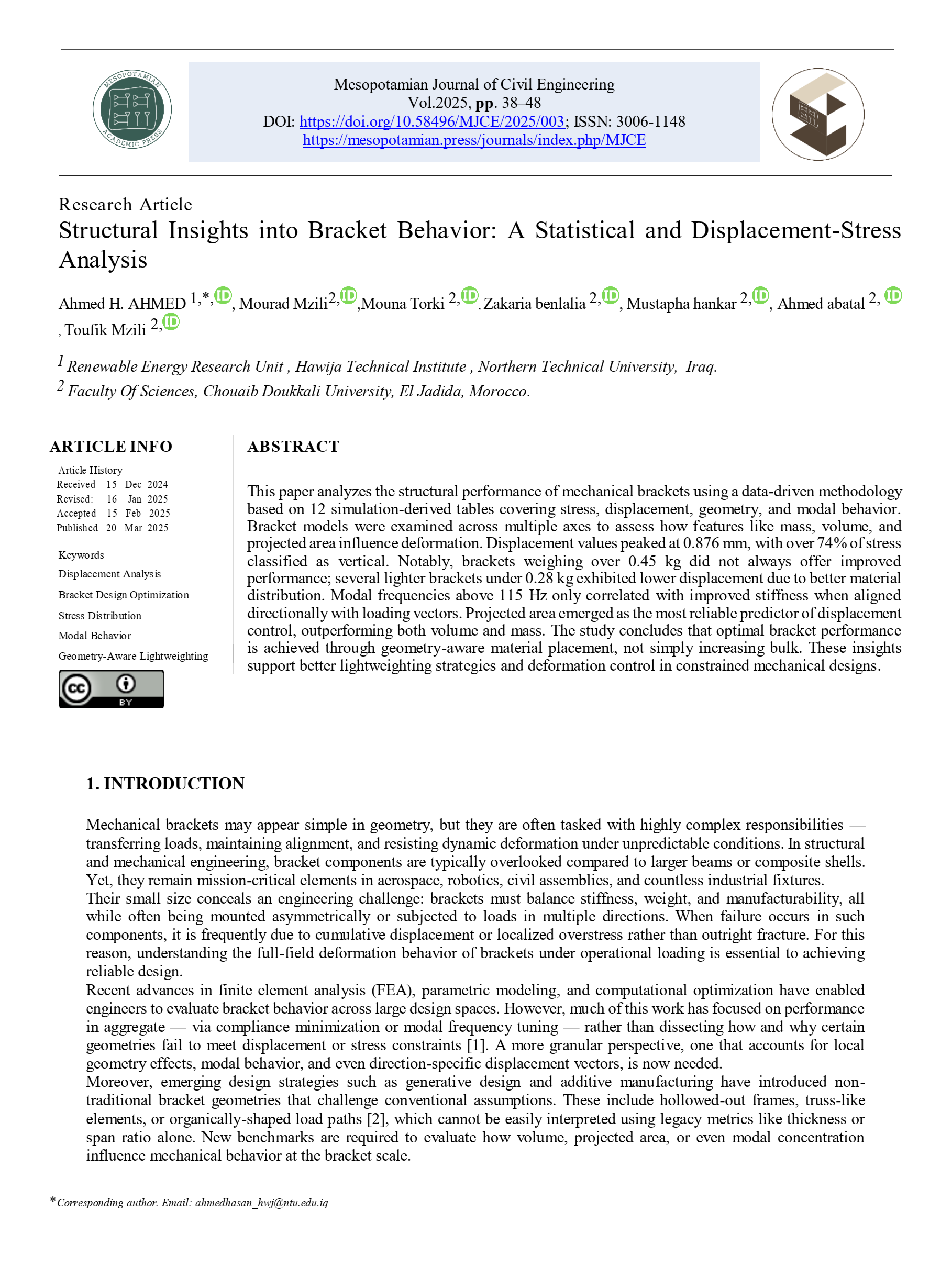Structural Insights into Bracket Behavior: A Statistical and Displacement-Stress Analysis
Main Article Content
Abstract
This paper analyzes the structural performance of mechanical brackets using a data-driven methodology based on 12 simulation-derived tables covering stress, displacement, geometry, and modal behavior. Bracket models were examined across multiple axes to assess how features like mass, volume, and projected area influence deformation. Displacement values peaked at 0.876 mm, with over 74% of stress classified as vertical. Notably, brackets weighing over 0.45 kg did not always offer improved performance; several lighter brackets under 0.28 kg exhibited lower displacement due to better material distribution. Modal frequencies above 115 Hz only correlated with improved stiffness when aligned directionally with loading vectors. Projected area emerged as the most reliable predictor of displacement control, outperforming both volume and mass. The study concludes that optimal bracket performance is achieved through geometry-aware material placement, not simply increasing bulk. These insights support better lightweighting strategies and deformation control in constrained mechanical designs.
